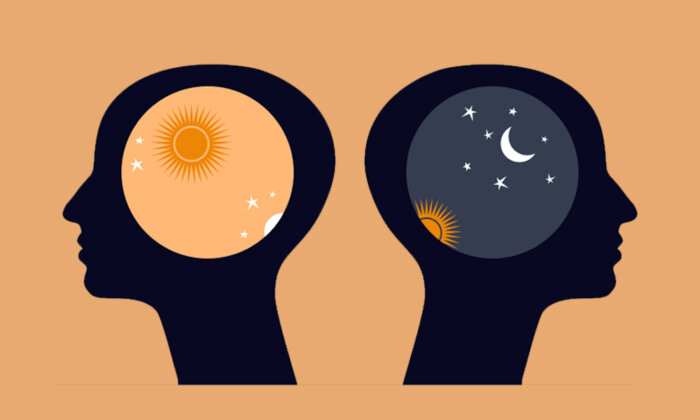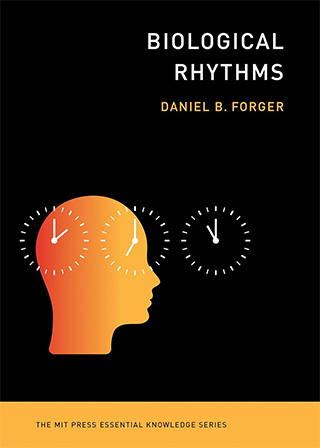The Hidden Language of Our Body’s Rhythms

From the firing of neurons in a fraction of a second to the monthly cycle of ovulation to a seasonal shift in sleep patterns, the human body runs on rhythms — all more knowable now than ever, thanks to wearables. Making sense — and making use — of these signals is something else.

Daniel Forger, a professor of mathematics and computational medicine and bioinformatics at the University of Michigan, has spent years studying the hidden clocks inside our bodies. In his book “Biological Rhythms,” published in the MIT Press’s Essential Knowledge series, he combines mathematical modeling, real-world data from wearables, and a deep understanding of physiology to explain how rhythms in sleep, mood, heart rate, hormones, and metabolism affect human performance.
Forger shows that these rhythms govern everything from peak attention in the morning to seasonal shifts in activity and energy. Ancient civilizations relied on cycles like day and night for planting and harvesting; today, modern life — with artificial lighting, constant connectivity, and round-the-clock schedules — has disrupted many of them. By learning to read these rhythms, Forger suggests, we can improve health, enhance productivity, and better understand our bodies.
Your background spans mathematics, computational medicine, and bioinformatics — fields people might not immediately associate with the study of biological rhythms. What led you to this topic?
Rhythms and timekeeping have many unique mathematical properties that can be hacked to improve our lives. These rhythms are everywhere in nature and human life. From the day-night cycle to seasonal and tidal changes, organisms — including humans — have always adapted to these patterns, and ancient societies relied on them for agriculture and timekeeping.
Mathematics allows us to understand these patterns, revealing rules that determine why, for example, we recover from jet lag in a couple of days or a week, why we might be able to sleep now but paradoxically not if we stay up another hour or two, and why rhythms in mood are at the core of bipolar disorder — even if we’re only starting to understand their basis. Over the past decade, my group at the University of Michigan has been immersed in large datasets tracking sleep, temperature, heart rate, and other physiological cycles, and that work has shown us how deeply interconnected these signals are. Rhythms are mathematical at their core, so my background has helped me see how these signals work. The book doesn’t go into the depths of the mathematics or present equations — my other MIT Press book does that — but it does present these ideas in a way that the general public can understand.
What’s one rhythm we don’t pay enough attention to — something subtle but with big consequences for health or performance?
I’ll give you two. The coming years will show how rhythms in dopamine are essential to brain function and may underlie mental health challenges, including depression and bipolar disorder. The difficulty is that this rhythm is almost impossible to measure. Like melatonin, dopamine follows a circadian pattern, governed by internal molecular clocks and signals from other brain regions. While its biochemistry differs from melatonin, it follows similar basic principles of rhythmic behavior, with highs and lows that can influence attention, motivation, and mood throughout the day. Understanding these rhythms could ultimately help explain why some individuals experience mood swings or vulnerabilities at particular times, though capturing them in real-world data remains a challenge.
Data on heart rate rhythms, on the other hand, is extremely easy to measure — many of us wear watches that passively track it — and is well-researched. Heart rate rhythms provide many signals about what’s happening in the body. When we move or engage in activity, our heart rate rises to meet the body’s increased demand for resources. During sleep, it decreases, preparing the body for rest. Stress and other events can trigger the release of adrenaline, which raises heart rate over roughly an hour. There is also what is called basal heart rate, which often reflects overall health — athletes, for example, tend to have surprisingly low basal rates. Underlying all these patterns is a circadian (daily) rhythm in heart rate, which helps the body anticipate periods of peak activity.
Modern life — shift work, screens, artificial lighting — has dramatically changed how we interact with our natural rhythms. What studies or examples best show this impact, and what can people do to protect or realign their rhythms?
My colleagues and I recently published a paper showing that our brains, even in modern environments, are still trying to track the seasons. Because we can’t look directly into a human brain to see how they track seasons, we had to take an indirect approach. Recent studies in mice had identified genetic variants that influence seasonal behavior, so we looked for equivalent variants in humans and tested those individuals. People with these variants showed similar effects — they had more difficulty adjusting to shiftwork, particularly in winter.
Many other mammals rely on seasonal cues for essential functions, such as knowing when to reproduce. Imagine what happens to a system in our brains that is trying to track dawn and dusk (and thus what season it is) when we turn on the light at all times of day. This is on top of the confusion our bodies have about what time of day it is. Fortunately, we can control some of this by keeping more regular sleep and light routines. And there are plenty of apps that can help with that.
Wearables make it possible to track our body’s rhythms, but you note there are limits and quirks in the data. How can people read these metrics in a useful way without overinterpreting every dip and spike?
The key is to distinguish what’s signal and what’s noise. All real-world data has noise — some of it comes from a wearable being imprecise, some from unpredictable life events. A year of minute-by-minute data means more than a million measurements, so more data isn’t always better. The real challenge is knowing when extra information adds insight and when it’s just repetition.
And yes, wearables also capture plenty of quirks: steps recorded during sleep, heart rates that don’t make physiological sense, missing chunks of data. These oddities can come from how and when people wear their devices, or from the algorithms that companies use to decide what counts as a “step” or a “sleep stage” — algorithms that are proprietary and constantly changing.
That’s why the best interpretation comes from combining good algorithms with knowledge of physiology. Let an app help with the analysis, but understand what questions it’s answering. Don’t overreact to every fluctuation; instead, look for patterns and rhythms that persist over time.
You point out that mood rhythms are far harder to capture than sleep or heart rate. What insights can monitoring them realistically offer for everyday life?
Tracking our mood can help improve diagnosis and personalize treatments. For example, in the book, I describe a method for using mood data from individuals with bipolar disorder to classify them into different groups, which could help predict treatment outcomes and suicide risk. Beyond mood, tracking sleep and daily (circadian) patterns can help the body cope with stress and avoid difficult mood states, making us more mindful. I share a story from my time in Germany: I was anxious about a keynote talk, and using my app, I realized that my lack of sleep and misaligned circadian rhythms were likely driving that anxiety.
Researchers found that while sleep loss affects daily mood, its impact depends on your circadian rhythms.
The Intern Health Study illustrates this on a large scale. (It tracks thousands of first-year medical residents across day and night shifts using wearables.) Researcher Benjamin Shapiro found that while sleep loss affects daily mood, its impact depends on your circadian rhythms. Consistent sleep timing appears to improve mood, while irregular sleep — especially at the “wrong” circadian phase — may contribute to clinical markers of depression. This was measured using PHQ-9 questionnaires, a standard tool for depression that asks nine questions about energy, interest, and mood, scored so higher numbers indicate greater depressive symptoms. The study also suggests a feedback loop: Stress disrupts sleep, variable sleep worsens mood, and the cycle reinforces itself. Overall, it supports growing evidence that regular sleep timing is one of the most powerful stabilizers of mood.
You emphasize that everyone’s rhythms are unique. How much do genetics, lifestyle, or environment affect these differences, and to what extent can people actually adjust their rhythms to improve health or performance? Have you made changes in your own life based on what you’ve learned?
Genetics definitely play a role in rhythms, but environmental and social factors are extremely important as well. Your rhythms are certainly adjustable. I regularly check my alignment with the social rhythms app and pay close attention not just to what I do but when I do it.
The beauty of studying rhythms is that they connect everything from the mathematics of timekeeping to the messiness of real-world data. Something as simple as step counts can go awry, yet those noisy signals still contain deep truths about how our bodies and brains keep time. That’s the challenge and the reward: learning to see patterns in the noise, across timescales from seconds to seasons, and using that understanding to live more in sync with ourselves and our environment.
Daniel B. Forger is Professor in the Department of Mathematics and in the Department of Computational Medicine and Bioinformatics at the University of Michigan. He is the author of “Biological Rhythms,” in the MIT Press Essential Knowledge series.



